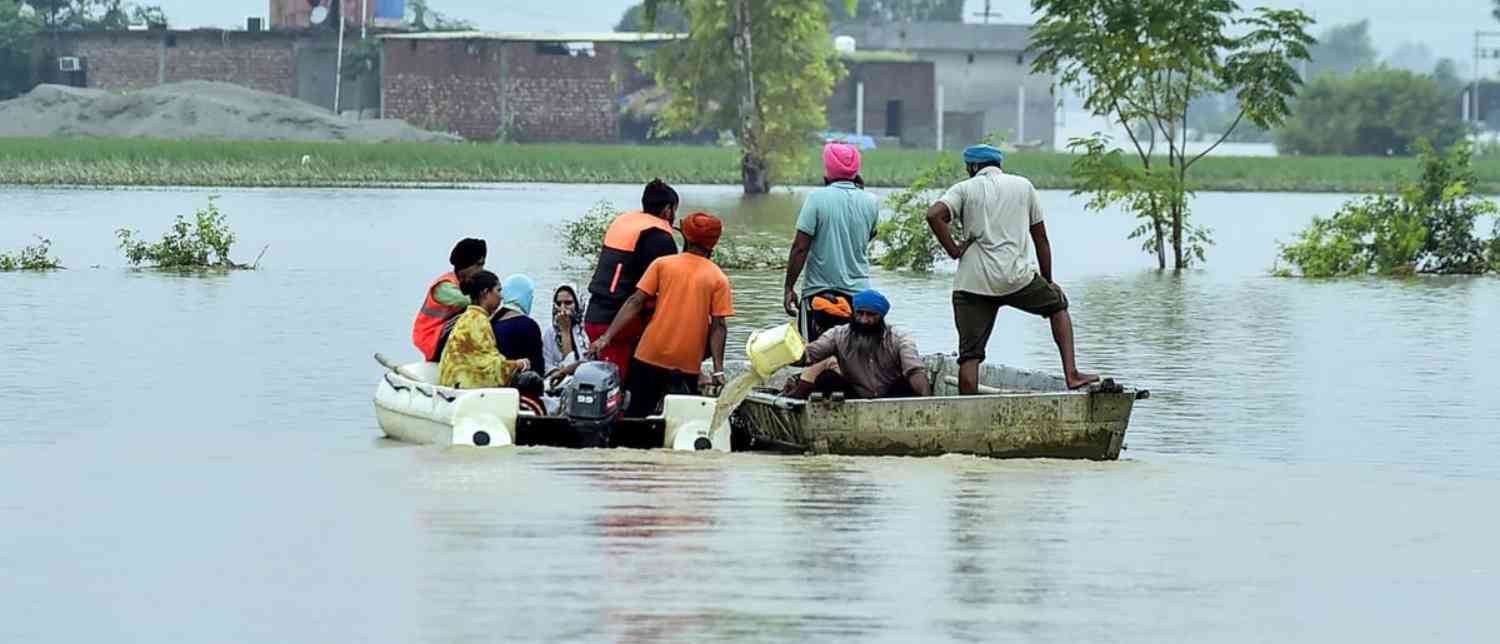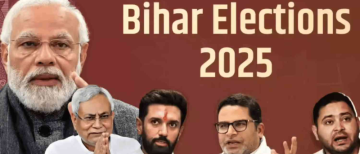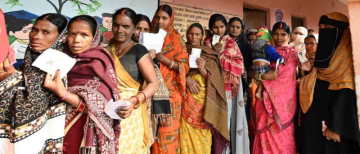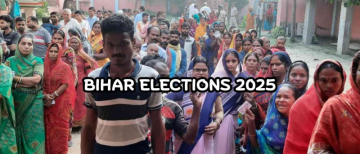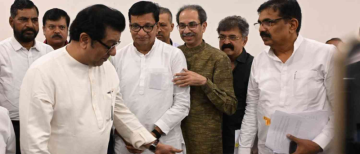Punjab, once hailed as the food bowl of India and a proud contributor to the nation’s progress, today finds itself battling one of the worst floods in decades. With nearly 1,500 villages submerged and over 300,000 people affected since August 17, the state is reeling under unprecedented devastation. In such moments of crisis, the people naturally expect the presence of the nation’s Prime Minister — not just as a political leader but as a father figure, symbolizing solidarity and reassurance.
Yet, in the eyes of many Punjabis, that reassurance is missing. While Prime Minister Narendra Modi expressed grief over an earthquake in Afghanistan shortly after returning from Tianjin on 1 September, his absence from flood-ravaged Punjab sparked a wave of discontent. For the people, this neglect is more than just an oversight — it resonates deeply with long-standing feelings of alienation, simmering since the farm laws protests that rocked the state.
The question echoes louder than ever: If the Prime Minister has the time to plan a political tour in Bihar, why not a short visit to next-door Punjab?

Giani Harpreet Singh’s Sharp Rebuke: Punjab Cannot Be Ignored
The PM’s silence did not go unnoticed in Punjab’s political and religious circles. Giani Harpreet Singh, former head priest of the Akal Takht and now a central figure in the fractured Sikh political landscape, issued a blunt response. Taking to social media, he reminded Modi that Punjab too is part of India, and its suffering demands urgent attention.
In a rare switch from Punjabi to English, Giani Ji wrote:
“Mr Prime Minister, it is good that you expressed sympathy for Afghanistan, but Punjab is also a part of this country, where nearly 1,500 villages and 300,000 people have been badly affected since August 17. Your lack of attention towards Punjab is extremely painful.”
He didn’t stop at a tweet. Giani Singh followed up with a three-page letter addressed to Modi, posted publicly on his X (formerly Twitter) handle. His intervention reflects a broader sentiment among Punjabis — the sense that New Delhi, once again, is turning its back on the state in its darkest hour.
Why Punjab Expected More from Modi
Union Agriculture Minister Shivraj Singh Chouhan did visit Punjab, trudging through knee-deep floodwaters, inspecting damaged fields, and promising relief. But for many Punjabis, this was no substitute for Modi himself. The Prime Minister’s absence struck a raw nerve.
The expectation wasn’t political. Punjabis, including those who don’t traditionally vote for the BJP, still see the Prime Minister as head of the Indian family. In times of distress, they ask: Are Sikhs not members of that family?
This frustration taps into an older wound — the farmers’ movement of 2020–21, when Sikh farmers spearheaded a year-long protest against the three controversial farm laws. For many in Punjab, Modi’s absence now only confirms their chronic suspicion of Dilli (New Delhi).

From Punjab to the Northeast: A Dangerous Parallel
For decades, the phrase “out of sight, out of mind” has been used to describe how New Delhi often neglected the Northeast. Ironically, the same metaphor is now being applied to Punjab — a state geographically close to the capital, but politically fragile and strategically vital.
History offers grim warnings. When India overlooked the suffering in the Lushai Hills (now Mizoram) during the bamboo famine of the 1960s, it gave birth to the Mizo National Front, backed by China and Pakistan, which led an armed insurgency for two decades. The fear today is that a similar alienation could once again push Punjab into dangerous territory if its grievances remain unaddressed.
The BJP’s Punjab Dilemma: Between Sullenness and Strategy
Why would a shrewd political party like the BJP risk alienating Punjab further? Analysts suggest two possible explanations.
-
Lingering bitterness over the farm law protests: The siege of Delhi by Sikh farmers remains fresh in BJP’s memory. Combined with separatist campaigns run by overseas Sikh groups, this has left the Centre wary and resentful.
-
The BJP’s all-conquering mindset: The party doesn’t like to leave any state uncontested. Having expanded into Assam, Tripura, and Manipur after years of RSS groundwork, the BJP has its eyes on Punjab. Its gamble: with the Shiromani Akali Dal (SAD) weakened, radicals dividing the Sikh vote, and Hindus consolidating, the BJP could potentially carve a winning space.
The numbers back this calculation. In the 2022 Assembly elections, BJP’s vote share was just 6.6%. But by the 2024 Lok Sabha polls, it jumped to 18.56%, overtaking the Akalis at 13.2%. While Congress and AAP were tied at around 26% each, the BJP’s rise was significant.
But Punjab is unlike other states. Winning here requires bridging divides, not widening them. Hindu-Muslim polarization, which the BJP has used elsewhere, cannot work in Punjab where Sikhs form the majority. In fact, radical groups and separatist propaganda thrive when mainstream parties are seen as divisive.

Rising Radicals, ISI, and the Social Media Battlefield
Punjab today faces a dangerous cocktail: political fragmentation, religious polarization, and foreign interference.
A growing network of YouTube channels and podcasts, many run from Canada and the UK, subtly pushes narratives designed to deepen Sikh-Hindu divides. Some even rope in retired Pakistani military veterans to praise Indian institutions while slipping in messages that glorify Pakistan or sow doubts about India.
The propaganda cleverly appeals to Punjabiat — the shared culture, music, and language that connect people across the India-Pakistan border. It portrays Muslims and Sikhs as natural allies and hints that Hindus are the real “outsiders.”
The ISI (Pakistan’s spy agency) views Punjab as a low-hanging fruit. By exploiting historical grievances and amplifying discontent, it hopes to destabilize India. Unless the Centre acts wisely, Punjab risks becoming vulnerable to the same cycle of alienation and militancy that scarred it in the 1980s.
Congress Steps In: Demands for “National Calamity” Status
Amid this turmoil, opposition leaders are sharpening their attacks. Punjab Congress chief Amarinder Singh Raja Warring has demanded that the floods in Punjab, Himachal, and Jammu & Kashmir be declared a “national calamity”.
He didn’t hold back in criticizing both the Centre and the Aam Aadmi Party (AAP), which governs Punjab.
-
On Modi, he asked bluntly: “Shouldn’t the Prime Minister visit Punjab’s flood-hit areas? Since he is back from the SCO summit, we hope he announces an immediate relief package.”
-
On AAP leaders, he quipped: “Where are Shri Arvind Kejriwal Ji and Shri Manish Sisodia Ji? Was Punjab only for winning elections to fill coffers for fighting elsewhere?”
For Warring, the devastation in Punjab is proof that both the Centre and the state government have failed in their duties.

Modi Promises Support, But Will It Be Enough?
Facing mounting pressure, official sources confirmed that PM Modi will soon visit flood-affected states, including Punjab, Himachal Pradesh, and Uttarakhand. Union Minister Shivraj Singh Chouhan has already submitted a preliminary report, promising that the Centre will prepare short-term, medium-term, and long-term plans to rebuild Punjab.
Chouhan highlighted several key challenges:
-
Silt removal from fields to ensure timely sowing of Rabi crops.
-
Preventing disease outbreaks once the waters recede.
-
Safe disposal of dead animals to curb epidemics.
-
Strengthening embankments along the Sutlej, Beas, Ravi, and Ghaggar rivers, which have weakened due to illegal mining.
While these assurances are welcome, the critical question remains: Will Modi himself show up in Punjab, walking its flooded fields, and reassuring its people?
A Calamity, But Also an Opportunity
Disasters, while tragic, can also be turning points. For the BJP, Punjab’s floods present a rare opportunity to rebuild bridges with a state where it has long struggled for acceptance. By showing empathy, delivering swift relief, and recognizing Punjab’s unique historical contributions, the Centre could rewrite its relationship with the state.
For India as a whole, the stakes are even higher. Punjab is not just any state. It is a land that has fed the nation, defended its borders, and enriched its culture. Without Punjab’s affection and trust, India’s democratic fabric would be incomplete.

Punjab at a Crossroads
Punjab’s floods have exposed more than broken embankments — they have revealed the cracks in India’s federal bond. For the people of Punjab, Modi’s absence is not merely about one leader skipping a visit; it symbolizes a deeper neglect that risks reviving old wounds.
If history teaches anything, it is that alienation breeds insurgency. India cannot afford to repeat past mistakes — not in Punjab, not again. The time for political calculations is over. What Punjab needs today is empathy, attention, and action at the highest level.
For Modi and the BJP, the choice is stark: treat Punjab as a battleground for votes, or embrace it as a vital limb of the Indian family.
The floods may have devastated Punjab, but they also offer a chance — a chance to heal, rebuild, and reaffirm that in India, no state and no people will ever be left behind.
With inputs from agencies
Image Source: Multiple agencies
© Copyright 2025. All Rights Reserved. Powered by Vygr Media.

